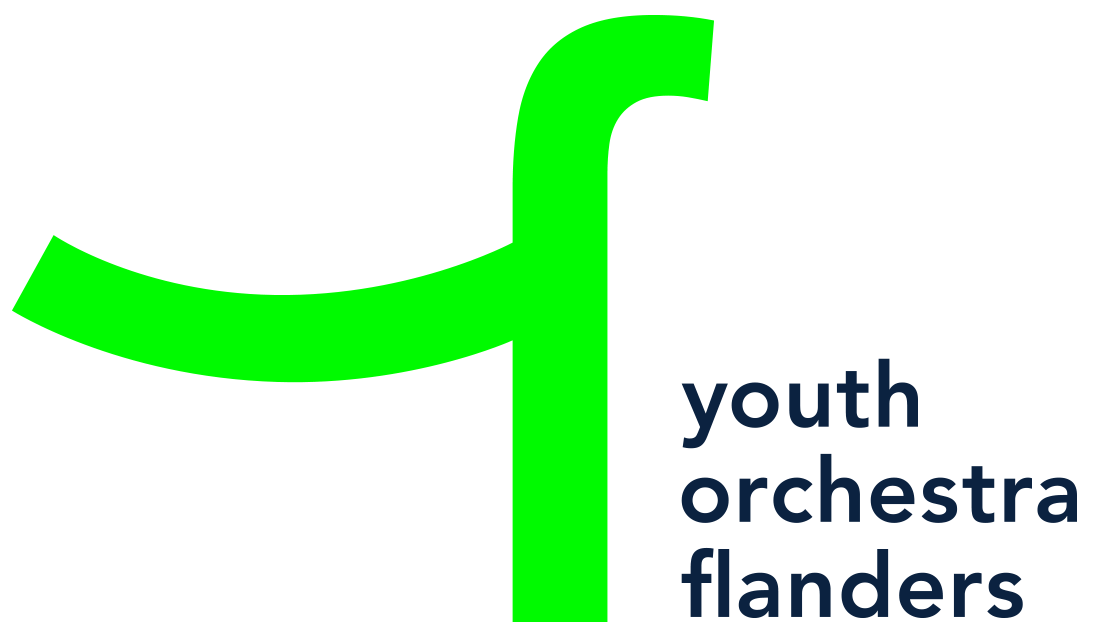Ludwig van Beethoven, Egmont Overture (9’)
Dmitri Shostakovich, Cello Concerto n.1 (28′)
Ludwig van Beethoven, Symphony n.3 “Eroica” (50′)
Youth Orchestra Flanders explores composers’ response to oppression. Under the experienced baton of former music director of Brussels Philharmonic Yoel Levi, and starring cellist Victor Julien-Laferrière, winner of the prestigious Queen Elisabeth Competition 2017, the orchestra presents works by Beethoven and Shostakovich.
Napoleon crowned himself as Emperor, leading to Beethoven’s enraged response: he deleted the tyrant’s name from the title page of his Third Symphony ‘Eroica’. Shortly after, Count Egmont’s beheading on the Grand Place in Brussels served as the inspiration for Beethoven’s famous overture, immortalizing the count as a symbol against injustice.
Centuries later, the clash between Shostakovich and the oppressive Soviet regime marked the tormented composer forever, making his First Cello Concerto one of the most heart-wrenching works ever written.
Beethoven & Shostakovich
Ludwig van Beethoven (1770-1820) held the ideals of the French Revolution – liberty, equality and fraternity – in high regard and extended them to his musical ideas. He saw in the Corsican general Napoleon a messiah who would ensure a more just society. When Beethoven learned in 1804 that his great hero had crowned himself emperor of France, his disappointment was great: “So is he already nothing but an ordinary man? Now he too will trample all rights, exalt himself above others, cherish only his greed for honour, become a tyrant!” Furious, he deleted the tyrant’s name from the title page of his Third Symphony ‘Eroica’ and replaced it with the words ‘Sinfonia eroica, composta per festeggiare il sovvenire di un grand’Uomo’ when it was published in 1806. Whether by that great man he was referring to Napoleon, himself or heroism in general remains to be seen. What is certain, is that his Third Symphony revolutionised musical history.
The same combativeness is echoed in the triumphant overture Beethoven composed a few years later to Goethe’s theatre work Egmont, based on the fate of freedom fighter Count Lameral of Egmont. More than 450 years after his death, Egmont is still a symbol of revolt against all forms of oppression. If there is one composer who yearned for autonomy too, it was Dmitri Shostakovich (1906-1975). During his whole life, the Russian composer clashed against the restrictions imposed on artists by the Soviet regime. Until well after Stalin’s death, Shostakovich continued to wrestle with the dilemma of whether to please the authorities in his compositions or go down the path of innovation.
A heroic symphony
When Beethoven set to work on his Third Symphony, he was not only wrestling with the prevailing morals and musical aesthetics of his time, but also waging an inner battle against his increasing deafness. However, the illness awakened a certain fighting spirit in him: “I want to seize fate by its scruff, it will certainly not bow me down completely.” With his Third Symphony, Beethoven put these words into action. Two sledgehammer chords at the beginning of the symphony immediately heralded the “new directions” he wanted his music to take.
Spectators did not know what they were hearing at the first public performance at the Theater an der Wien on 7 April 1805. Comments ranged from “a bold disorder of its own”, to “motley and bizarre in many places” to “so long that the listener leaves the hall dead tired”. By flouting the technical and aesthetic conventions of the classical symphony in the ‘Eroica’, Beethoven rocked the concert hall on its cardigans. At the heart of this symphony are not nicely rounded melodies, but rather short motifs that are constantly developed, rehashed and combined. In addition, the work is full of – for the time – dissonant harmonies and metrical shifts, and with a duration of about 50 minutes, it was twice as long as what the audience was used to until then. Moreover, the whole work seems to express an extra-musical idea – that of heroism – which makes Beethoven’s Third Symphony point ahead to the programmatic works of late-Romantic composers like Berlioz, Strauss or Mahler.
A call for freedom
From the very beginning of his theatrical work Egmont – named after Count Lameral of Egmont, who was beheaded on 5 June 1568 in the Grand Place in Brussels – Goethe foresaw that it would be accompanied by newly composed music. For the performance on 15 June 1810 at Vienna’s Burgtheater, he issued a composition commission. The director of the theatre then wrote to his fellow townsman Beethoven. The composer did not hesitate for a second: after all, he was a great admirer of Goethe; and moreover, he was also fond of the nationalist theme after Napoleon and his troops had occupied Vienna in 1805. It offered him the chance to shine a critical light on the turbulent political situation.
Beethoven composed another overture and four interludes, besides the music to the text passages already indicated by Goethe. The performance was not really enjoyed, so the piece was hardly ever performed entirely later on. Only the overture would survive the premiere, as a theatre piece in miniature form. It outlines the course of the drama, from a tragic and dark beginning to the jubilant ending in major: the idea of freedom lives on in the hero’s relatives. And even today, some 450 years later, Egmont is still a symbol of revolt against any form of oppression.
A virtuoso signature work
Almost all his life, Shostakovich worked under the yoke of the Soviet regime. After the October Revolution in 1917, all artistic and cultural expression was curbed. Stalin made things even more difficult for artists. He demanded total submission; anyone who disagreed with his rule disappeared off the radar. The continuous terror made Shostakovich live in a twofold struggle: on the one hand, for fear of being arrested, he did not want to clash with the authorities; on the other, total surrender would limit his creativity. Nevertheless, he did not flee his homeland and managed to move between the demands of the communist regime.
Stalin’s death on 5 March 1953 did not bring immediate improvement. A certain fear lingered, and on top of that, difficult years on a personal level followed. Shostakovich’s wife Nina Vasilyevna died of cancer in 1954, and a new marriage in 1956 lasted only three years. In November 1959, Shostakovich also received the bad news that paralysis symptoms on his right hand were the result of chronic inflammation of his spinal cord. He saw his career as a pianist go up in smoke. Yet that year, he had found the energy to compose his First Cello Concerto, dedicated to friend master cellist Mstislav Rostropovich. The cellist had been waiting for it for years and, on the advice of his first wife Nina, had never dared to ask for it.
In the highly virtuosic work, popular themes – including a parody of Stalin’s so-called favourite song in the last movement – as well as Shostakovich’s personal musical signature D-Es-C-H (referring to his initials ‘D. Sch.’) reverberate in numerous variations, in addition to quotations from earlier symphonies. In the preface to the score, he wrote: “this four-movement concerto is divided into two major movements: the opening movement and then three more movements without pause. Together they form an integral whole with uniform themes and images.” Rostropovich memorised the composition in just four days, and that same year he premiered it at the Leningrad Conservatory. Not much later, he ensured that the Cello Concerto was also premiered in the United States to loud applause and released on record.
Commentary by Aurélie Walschaert
Conductor, Yoel Levi
Soloist, Victor Julien-Laferrière
Rehearsals March 20 > 23, 2023
Violin 1
María Cotarelo García
Enric Moya Crespín
Kun Sun
Sophie Paeshuyse
Lotte De Munck
Anna Passetchnik
Sofia Nasibulina
Yuliia Gorbulinska
Eline Vanderpijpen
Juliette Janssen
Inês Diez
José Manuel Jiménez
Wannes D’haese
Violin 2
Eliana Schuermans
Francisco Ferreira
Lisa De Prins
Kasper Delrue
Hanon Inatomi
Ise Dolhain
Sumer Sanah Ullah
Merel De Coorde
Alexis Delporte
Bram Van Eenoo
Ekaterina Philippovich
Viola
David Blanco De Paz
Jutta Demuynck
Keren Wang
Nanxi Dong
Charis Neyens
Helena De Bruyn
Uliana Sharina
Inma Muedra Ventura
Cello
Juliette Eftekhari
Nicolas Vicente Antolin
Javier Costa
Vladislav Glushchenko
Margot Demeyere
Georges Moissonnier-Benert
David Penitzka
Pau Valls
Double Bass
Luzia Vieira
Shih-wen Lee
Fran Decloedt
Yubei Zhao
Fons Dobbelaere
Flute
Julita Burzynska
Célestine Wacquez
Clarisse Feliciano (pic)
Oboe
Laura Aranda
Raphaëlle Nenert
Clarinet
Moïra Michelazzo
Morena Quagliara
Bassoon
Rob Laethem
Diedelinde Buffel
Horn
Koen De Wael
David Quiles
Walmir Silva
Kato van Echelpoel
Trumpet
Daan Ubaghs
Marcel Degotte
Timpani
Remy Gouraud
Celesta
Lucia Arzallus
Fri. March 24th, 2023 – 20:15 | Brussels, Flagey
19:15 pre concert talk: Inneke Plasschaert & Victor Julien-Laferrière & Nicola Mascia (EN) (Foyer 2)
19:45 pop up concert: Youth Orchestra Flanders Chamber Project
20:15 concert (Foyer 4):
Ludwig van Beethoven, Egmont Overture (9′)
Dmitri Shostakovich, Concerto pour violoncelle n°1 (28′)
break (20′)
Ludwig van Beethoven, Symphonie n°3 “Eroica” (50′)
Tickets
Bruxelles, Flagey Studio 4


